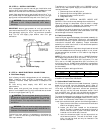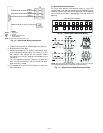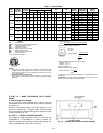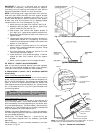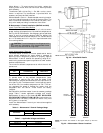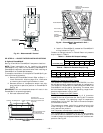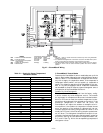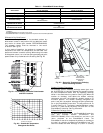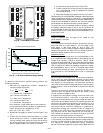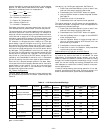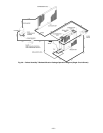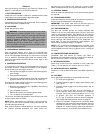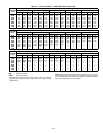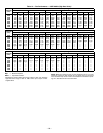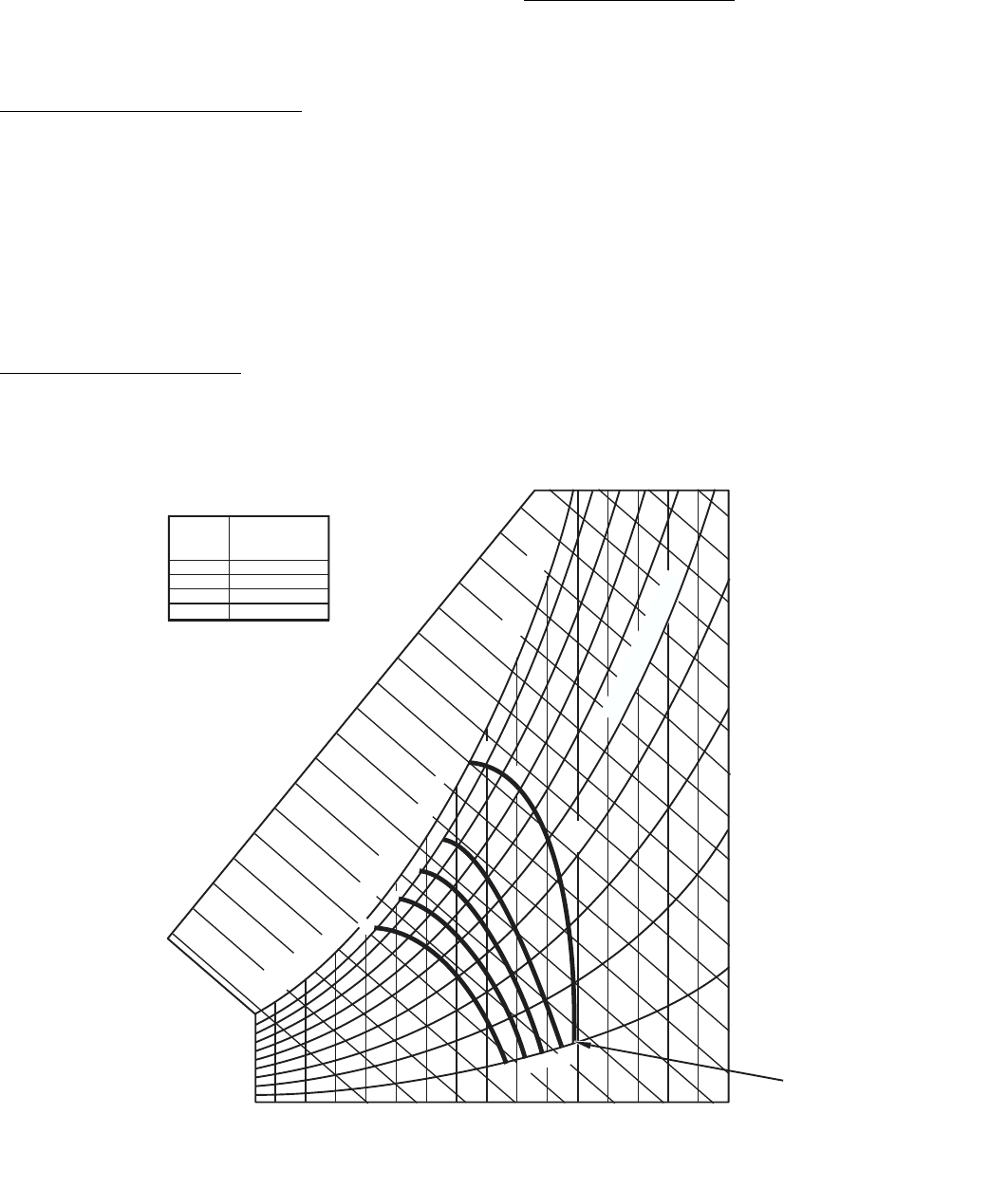
—21—
for cooling. For example, when the outdoor air has a lower
enthalpy than the return air and is below the set point, the
EconoMi$erIV opens to bring in outdoor air for free cooling.
Replace the standard outside air dry bulb temperature sen-
sor with the accessory enthalpy sensor in the same mounting
location. See Fig. 25. Mount the return air enthalpy sensor
in the return airstream. See Fig. 30. The outdoor enthalpy
changeover set point is set with the outdoor enthalpy set
point potentiometer on the EconoMi$erIV controller. When
using this mode of changeover control, turn the enthalpy set
point potentiometer fully clockwise to the D setting.
NOTE: Remove 620-ohm resistor if differential enthalpy sen-
sor is installed.
Indoor Air Quality (IAQ) Sensor Input
The IAQ input can be used for demand control ventilation
control based on the level of CO
2
measured in the space or
return air duct.
Mount the accessory IAQ sensor according to manufacturer
specifications. The IAQ sensor should be wired to the AQ and
AQ1 terminals of the controller. Adjust the DCV potentiome-
ters to correspond to the DCV voltage output of the indoor air
quality sensor at the user-determined set point. See Fig. 33.
If a separate field-supplied transformer is used to power the
IAQ sensor, the sensor must not be grounded or the
EconoMi$erIV control board will be damaged.
Exhaust Set Point Adjustment
The exhaust set point will determine when the exhaust fan
runs based on damper position (if accessory power exhaust is
installed). The set point is modified with the Exhaust Fan
Set Point (EXH SET) potentiometer. See Fig. 28. The set
point represents the damper position above which the
exhaust fan will be turned on. When there is a call for
exhaust, the EconoMi$erIV controller provides a 45 ± 15 sec-
ond delay before exhaust fan activation to allow the dampers
to open. This delay allows the damper to reach the appropri-
ate position to avoid unnecessary fan overload.
Minimum Position Control
There is a minimum damper position potentiometer on the
EconoMi$erIV controller. See Fig. 28. The minimum damper
position maintains the minimum airflow into the building
during the occupied period.
When using demand ventilation, the minimum damper posi-
tion represents the minimum ventilation position for VOC
(volatile organic compound) ventilation requirements. The
maximum demand ventilation position is used for fully occu-
pied ventilation.
When demand ventilation control is not being used, the min-
imum position potentiometer should be used to set the occu-
pied ventilation position. The maximum demand ventilation
position should be turned fully clockwise.
Adjust the minimum position potentiometer to allow the
minimum amount of outdoor air, as required by local codes,
to enter the building. Make minimum position adjustments
with at least 10° F temperature difference between the out-
door and return-air temperatures.
CONTROL
CURVE
A
B
C
D
CONTROL POINT
APPROX. °F (°C)
AT 50% RH
73 (23)
70 (21)
67 (19)
63 (17)
1
2
1
4
1
6
1
8
2
0
2
2
2
4
26
28
30
32
3
4
3
6
3
8
40
42
4
4
46
9
0
1
0
0
80
70
6
0
50
4
0
3
0
20
1
0
E
NT
HA
LPY
—
B
TU
P
E
R
PO
U
N
D
DR
Y A
IR
85
(29)
90
(32)
95
(35)
100
(38)
105
(41)
110
(43)
35
(2)
35
(2)
40
(4)
40
(4)
105
(41)
110
(43)
45
(7)
45
(7)
50
(10)
50
(10)
55
(13)
55
(13)
60
(16)
60
(16)
65
(18)
65
(18)
70
(21)
70
(21)
75
(24)
75
(24)
80
(27)
80
(27)
85
(29)
90
(32)
95
(35)
100
(38)
APPROXIMATE DRY BULB TEMPERATURE— °F (°C)
A
A
B
B
C
C
D
D
RELA
TIVE HUM
IDITY (
%
)
HIGH LIMIT
CURVE
Fig. 31 — Enthalpy Changeover Set Points



